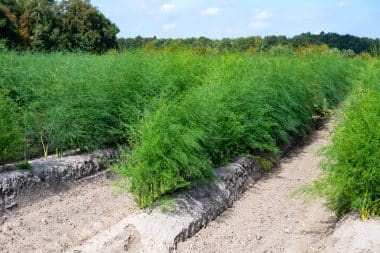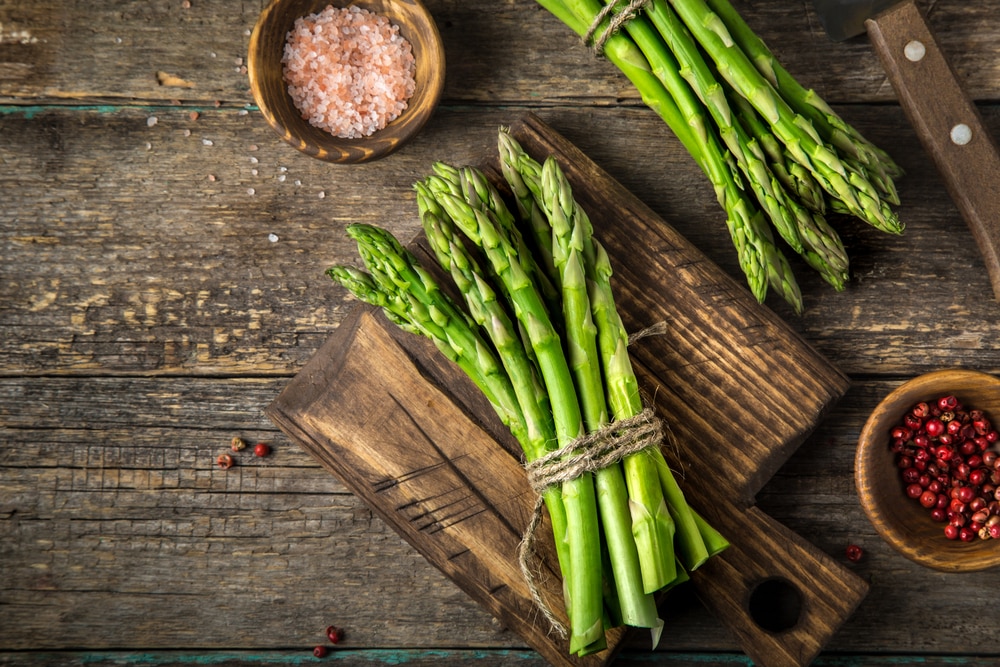The “Asparagus”, as botanists call it, was already well known to the ancient Greeks. There, however, asparagus was considered less of a delicacy in a rich menu and more of a medicinal plant and aphrodisiac. It was not until the Romans that they appreciated the taste of the stalk vegetable. Today, the asparagus fans are a large community. Around 9.4 million tons of the green, purple and white spears are now harvested worldwide every year, only about 120,000 tons come from Germany. In the meantime, many people no longer buy asparagus in the supermarket, but look for the freshest specimens directly from local farmers. It is cult to combine a holiday with culinary delicacy.
When your holiday becomes a culinary experience
Some prefer asparagus with hollandaise sauce and jacket potatoes, others like to combine the taste with delicious pasta or in Italy it is even packed on pizza. Whether purple asparagus, white asparagus tips or green asparagus, it’s up to you. However, the green spears have the advantage for many amateur cooks that they do not have to be peeled separately.
Holiday trips to the asparagus regions are for culinary enjoyment and relaxation. But cutting asparagus is pure backbreaking work for the employees of an asparagus farm. Lying down, for hours on special harvesting machines, the asparagus is first exposed underground, then cut straight at a length of 25 to 30 centimeters and finally the extraction point is closed again with soil. Therefore, one should particularly appreciate the “white gold”.
Asparagus in Germany
In Germany, you can travel along the Lower Saxony Asparagus Road . The route leads around 750 kilometres from one picturesque village to the next and in each one you can enjoy asparagus. Around one in five asparagus in Germany is cut out of the ground here. But there is also a large asparagus area in Bavaria with the Holledau .
If you still haven’t eaten your fill of the vegetable while traveling, you can also find and try out more recipes under https://www.frag-mutti.de/thema/spargel+kochen .
Asparagus in Austria
The Marchfeld, just outside Vienna, is Austria’s treasure chest for the “white gold”. Here, the slightly sandy soils and countless hours of sunshine work together to make the fresh, slightly nutty-tasting spears grow.
Asparagus in Holland

Tulips, cheese and windmills are clichéd to be associated with Holland. But asparagus has also found a home here. There is even an asparagus museum here.
If you would like to deviate from the classic asparagus preparations, you can also try asparagus chocolate or asparagus liqueur at our neighbors.
Asparagus in South Tyrol
In South Tyrol, asparagus connoisseurs have to hurry. Here, the season does not end on June 25, as in Germany, for example, but already at the end of May. On the other hand, this travel time for South Tyrol is popular in several respects: While everything in Germany is still grey and cold, here you can already enjoy the warm rays of the sun and admire the famous apple blossom in all its glory.
If you are looking for asparagus in South Tyrol, you can usually find it at all farmers’ markets, but the traditional place of cultivation is the Adige Valley. Here, asparagus is often served with Bolzano sauce, a variation of hollandaise sauce, a mixture of egg, vinegar and oil, lemon juice and herbs.
Result
The advantage of traveling to an asparagus growing region: You can combine healthy, good food with long hikes, a good drop of wine or the hunt for new asparagus recipes.
By the way: The term “white gold” dates back to a time when only the nobility could afford the luxury of eating asparagus. It was not until around 1900 that it was also possible for well-to-do citizens to bring asparagus to the table on special holidays. And even today, asparagus is one of the most expensive vegetables on our markets.
Sources:
Author: Jens Mecklenburg, Article: “The History of Asparagus”, The History of Asparagus – Nordic Food Culture (nordische-esskultur.de), published on: 10.04.2022
Author: Federal Information Centre for Agriculture, article: “Asparagus”, Federal Information Centre for Agriculture: Asparagus, published


